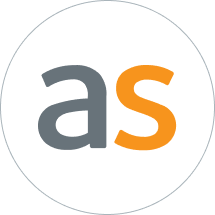We recognize the drive and determination of small business owners and entrepreneurs who power the Canadian economy. Behind each of their inspiring stories lies a common challenge: navigating the maze of financial barriers. This is especially true for micro-entrepreneurs in Ontario, who often face hurdles in accessing the affordable financial services they need to thrive. Here, we’ll explain how to get investment and loan-ready, to equip you with the tools to overcome these obstacles and fuel your business growth.
What is a Micro-entrepreneurship or Microenterprise?
At Alterna, we classify a microbusiness, also known as a microenterprise, as a business that normally employs up to 5 salaried employees and has an annual revenue of less than $2 million. Microbusinesses are common as they require very little startup capital and have low operating costs. Often, a micro business starts as a hobby or side hustle that generates additional income for the owner.
Micro and smaller businesses can have unique financial requirements and require special consideration for funding. The credit scores of entrepreneurs who own start-up micro businesses are an important consideration when seeking financing. As a result, traditional financing may not be an option for a large segment of entrepreneurs, such as newcomers with limited Canadian credit history, leading to financial exclusion.
Before seeking financing from any financial institution or considering the launch or expansion of your microenterprise, keep the following steps in mind:
- Define your company and unique value:
- Clearly explain what your company does and identify its niche. What sets your business apart from others?
- Explain how your product or service will make an impact in the market.
- Outline your business structure and your plans for future growth.
- Understand your market:
- Gain a thorough understanding of the market, sector, or industry in which your business operates.
- Develop strategies for acquiring new clients and building a solid customer base.
- Prepare your leadership and team:
- Ensure your company has a capable leadership team, management, and advisors with the necessary skills and expertise.
- Hire personnel who can contribute effectively to your business goals.
- Master your finances:
- Prepare detailed financial statements or cash flow projections.
- Provide a comprehensive overview of your company’s assets, liabilities, expenses, and costs.
- Detail your operation:
- Have a clear understanding of your company’s operations.
- Provide a breakdown of your business processes to ensure smooth and efficient functionality.
Once you have established your unique value proposition, understood your market, put in place your leadership team, organized your current finances, and detailed your operations, you are ready to seek financing for your business.
Steps for obtaining financing:
- Do your research: Investigate multiple financial institutions that you believe will best support your entrepreneurial journey, and have transparent conversations about your goals and aspirations so you can make the best decision for yourself and your business.
- Be prepared: You will need a detailed business plan when seeking capital. If you’ve followed the steps outlined above, you will be well on your way to establishing a formal, well-defined business plan. This plan will aid in your entrepreneurial journey toward investment and loan readiness since it allows your financial institution to gain an in-depth understanding of your business. In your plan, you will need:
- An executive summary that provides an overview of the content and establishes a tone.
- A clearly defined vision, mission, target market, competitive advantage, value proposition, and revenue model.
- Market research, including your customer profile and marketing and promotional strategy/plan.
- Your pricing model or strategy and financial statements or cashflow projections.
- Profiles of your management team.
- An executive summary that provides an overview of the content and establishes a tone.
- Identify your financial and cash flow projections: These are important predictors of how your business will function and can be used as initial benchmarks to evaluate success.
Inclusive Financing: Alterna’s Community Microfinance Program
At Alterna Savings, we believe that supporting underserved individuals and organizations in making meaningful contributions to their communities is our responsibility. We make it part of our mission to address the social, financial, and economic exclusion of underserved and underrepresented individuals and organizations for the betterment of our community as a whole.
Through an active presence in our local communities, we learned that many had dreams of starting meaningful business ventures, but there was a gap in financial resources and tools needed to transform these dreams into reality. With this in mind, Alterna Savings founded our award-winning Community Microfinance Program over 24 years ago to help fill that gap by providing access to capital and affordable financial products.
To date, Alterna has issued over 1,500 impact loans totaling over $10 million. If you are applying for financing through Alterna’s Community Microfinance program, we will review your business plan and financials/cashflow projections. In addition, we will consider other information, such as:
- A demonstrated skillset to make the business a success. These could be technical or operational skills.
- Evidence that the entrepreneur put in sweat equity towards building their business and/or completed any business development courses or programs.
- Character-based lending criteria.
Character-Based Lending
Alterna’s Community Microfinance Program uses an inclusive character-based lending approach. It complements traditional metrics like credit scores and income with character-based assessments of personal commitment, experience, skills, and the quality and viability of business ideas. Our experienced Microfinance team excels in this hands-on adjudication process.
Closing Remarks
Preparing for investment and loan readiness involves several key considerations:
- Understand that readiness is not a one-size-fits-all concept. It’s dynamic and must be tailored to your specific funding needs and the types of lenders and investors you’ll engage with.
- Timing is crucial. The process can be lengthy and involves multiple potential backers.
- Build a relationship with your chosen financial institution early on. By sharing your business story and its market need, you establish rapport and gain access to valuable assistance and continuous refinement of your readiness strategy.
For more information on Alterna’s support for small businesses and entrepreneurs or to request a copy of our Community Microfinance Business Plan Template and Cash Flow Statement, connect with our Community Microfinance team at microfinance@alterna.ca.
The information contained in this article was obtained from sources believed to be reliable; however, we cannot guarantee that it is accurate or complete. This material is for informational and educational purposes, and it is not intended to provide specific advice, including, without limitation, investment, financial, tax, or similar matters.
About Jean Barrett
Jean Barrett brings over 25+ years of banking experience in the Retail and Commercial sectors. As the Manager of Alterna Savings’ award-winning Community Microfinance Program, she oversees eight community microloan portfolios and manages 250+ small business borrowers in the Greater Toronto Area and Ottawa Region annually.
Certified in financial literacy, Jean advises individuals, entrepreneurs, and small businesses, and frequently speaks on business planning, credit, budgeting, and financing. She also supports ACCESS Community Capital Fund and the Ottawa Community Loan Fund teams.





